MATTERS OF OBSESSION
South African designers and ceramicists anchor their work in heritage and craftsmanship
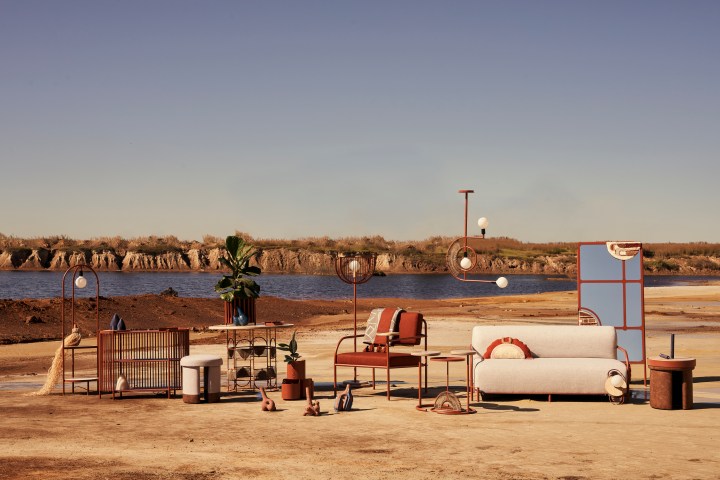
Prominent South African furniture designers, lighting designers, and artists are increasingly looking to storytelling, craftsmanship, and creative collaborations in search of newness – it’s not a trend, it’s a raison d’être.
“The essence of interior design will always be about people and how they live. It is about the realities of what makes for an attractive, civilised, meaningful environment, not about fashion or what’s in or what’s out.” The above is an oft-repeated quote from Albert Hadley, a celebrated mid-to-late 20th-century American designer.
While many others have expressed sentiments that were similarly dismissive of merely depending on the fashions of the day when it comes to the functional design objects we collect and create our homes with, there is no shortage of trend guides not only for homemakers but also for designers.
South Africa’s furniture and lighting design industry is arguably still in its infancy relative to the design industries that boomed in the west over the last century. As local designers and even a number of ceramicists have started to build an international profile, rather than chase the latest trends, they infuse their work with narratives inspired by heritage, culture, and craftsmanship, helping them stand out.
Specifically, when it comes to ceramics, be it functional pots or collectable sculptural pieces, that link to heritage and storytelling is not altogether unusual. South Africa has a number of ceramic artists growing in popularity who do exactly just that. Among our most celebrated ceramic artists is the founder of Imiso Ceramics, Andile Dyalvane.
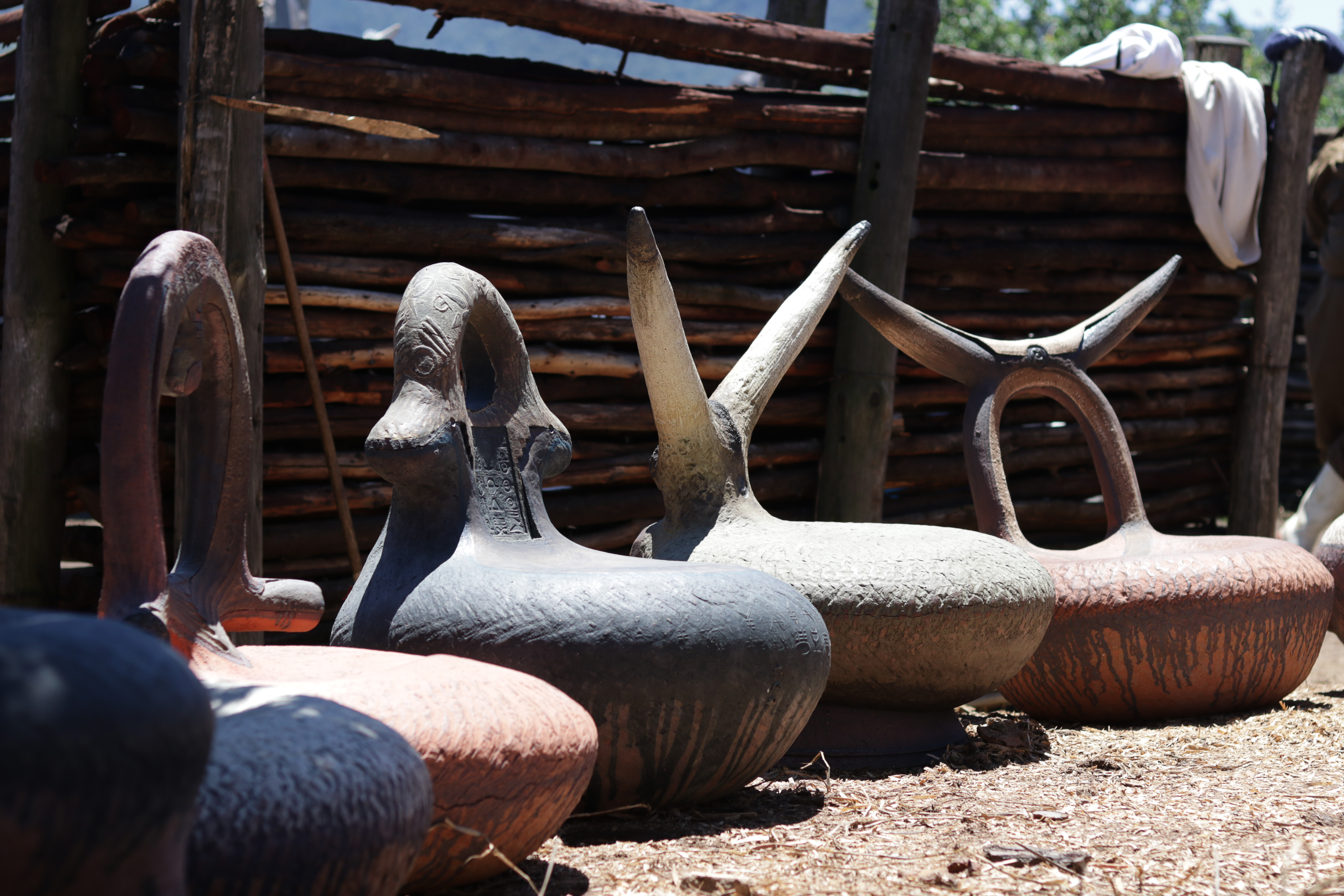
Pieces from Andile Dyalvane’s ‘iThongo’ body of work. Image: Malibongwe Tyilo
In November 2020, he unveiled iThongo, a body of work comprised of stools and benches. For that first public showcase, he took the collection to Ngobozana in the Eastern Cape, the village where he grew up. Deeply rooted in his heritage and culture, Dyalvane explained that his work — an exhibition and film presented both in Cape Town and New York — was “inspired by the ancestral landscape”. Discussing his work, Dyalvane told Maverick Life: “When it comes to galleries and museums, the documentary and the catalogue will be important to give context to the work. I want them to know where it comes from, the message and energy it carries, and the people whose culture it represents. They need to know what is happening here, what is lost and what needs to be restored.”
Alongside the steadily growing interest of ceramicists whose work stays true to the South African story, the past few years have also seen a rise in the prominence of furniture and lighting designers for whom storytelling — rooted in culture and heritage — also forms the foundation of their practice, much more so than a desire to follow global design trends.
Shining a light on local creation
“… I’m not someone who cares for trends. If you want to be authentic, and you want to create work that feels new and fresh, following trends can be very dangerous for you, because then you’ll just start repeating what everyone else has. It’s very difficult to stand out when you’re in that space,” says furniture and lighting designer and founder of Mash.T Design Studio, Thabisa Mjo, whose work was collected as part of Paris’ Musée des Arts Décoratifs’ (Museum of Decorative Arts) permanent collection.
Indeed, much of what has come to define the aesthetic of her studio over the past few years since launching in 2016, has been informed by memories from her own childhood, as well as other quintessentially South African stories. Her award-winning Tutu 2.0 light pendant, designed back in 2015 and arguably her best-known design, took its shape from the skirt worn during the Tsonga people’s Xibelani dance.
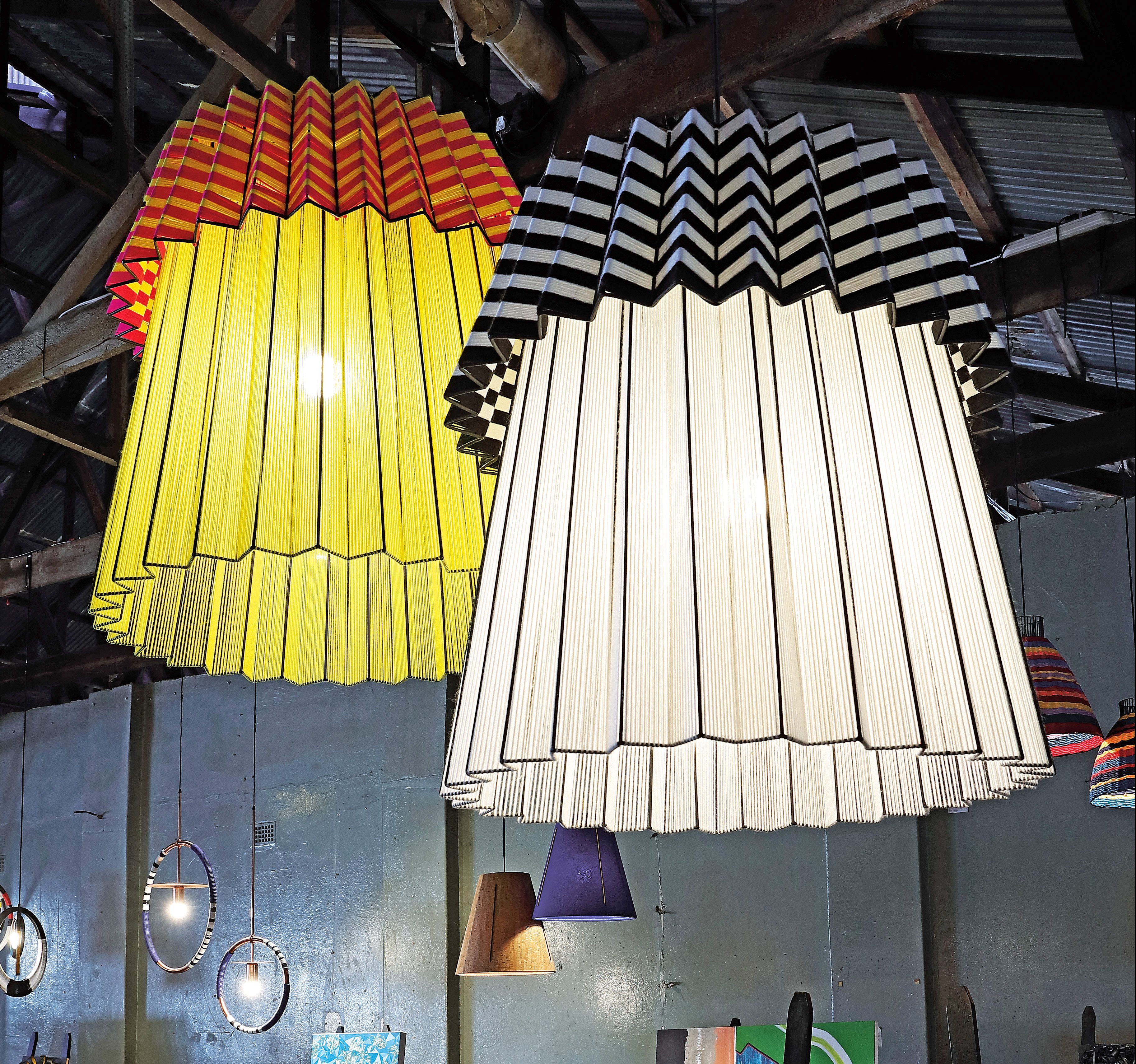
Tutu 2.0 lights by Mash.T. Image: Elsa Young
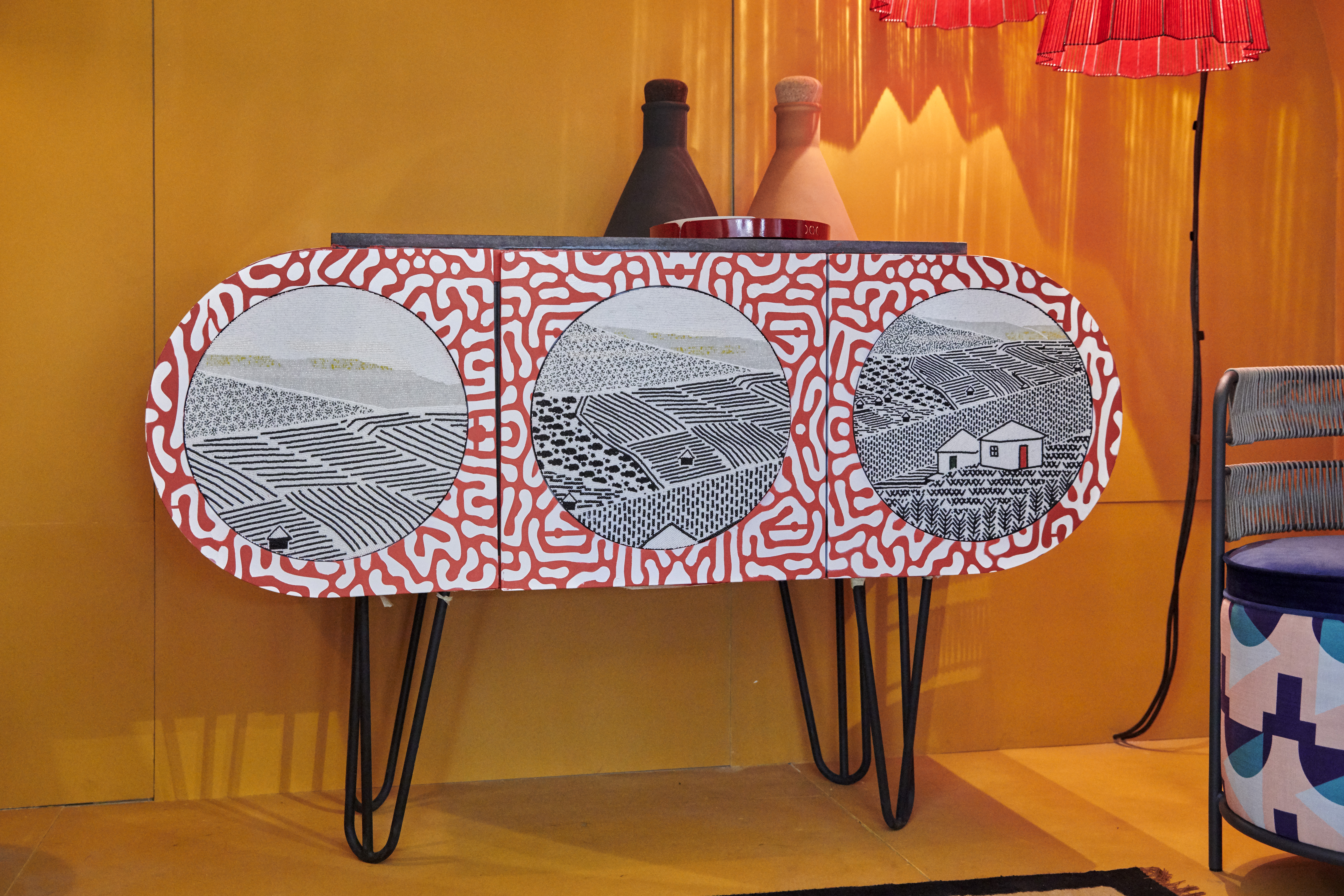
Potjie Server and beaded lights by Mash T Design. Image: Supplied
Since then, she has created an array of products, many of them telling something of her heritage, and often created in collaboration with local artisans who specialise in specific crafts such as the Hlabisa Bench, a three-seater bench with a woven back that took some 1,300 hours to weave, made in collaboration with furniture designers Houtlander and master weaver, Beauty Ngxongo.
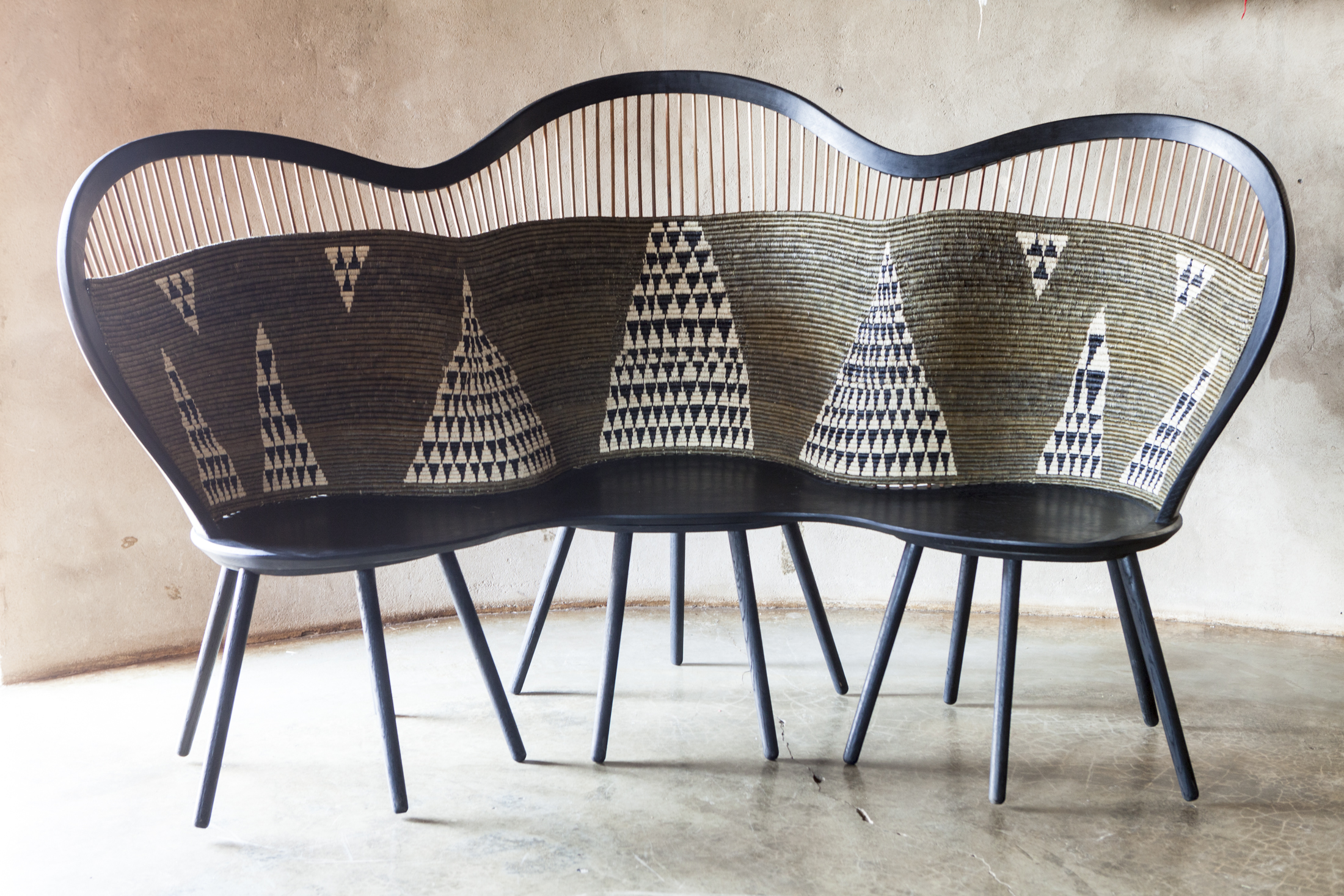
Hlabisa Bench by Houtlander x Mash T design. Image: Brett Rubin / Supplied
Most recently, she collaborated with another master weaver, Alfred Ntuli, who is known for weaving geometric patterns with telephone wire to create a new collection of pendants called ‘Alfred’s Lights’.
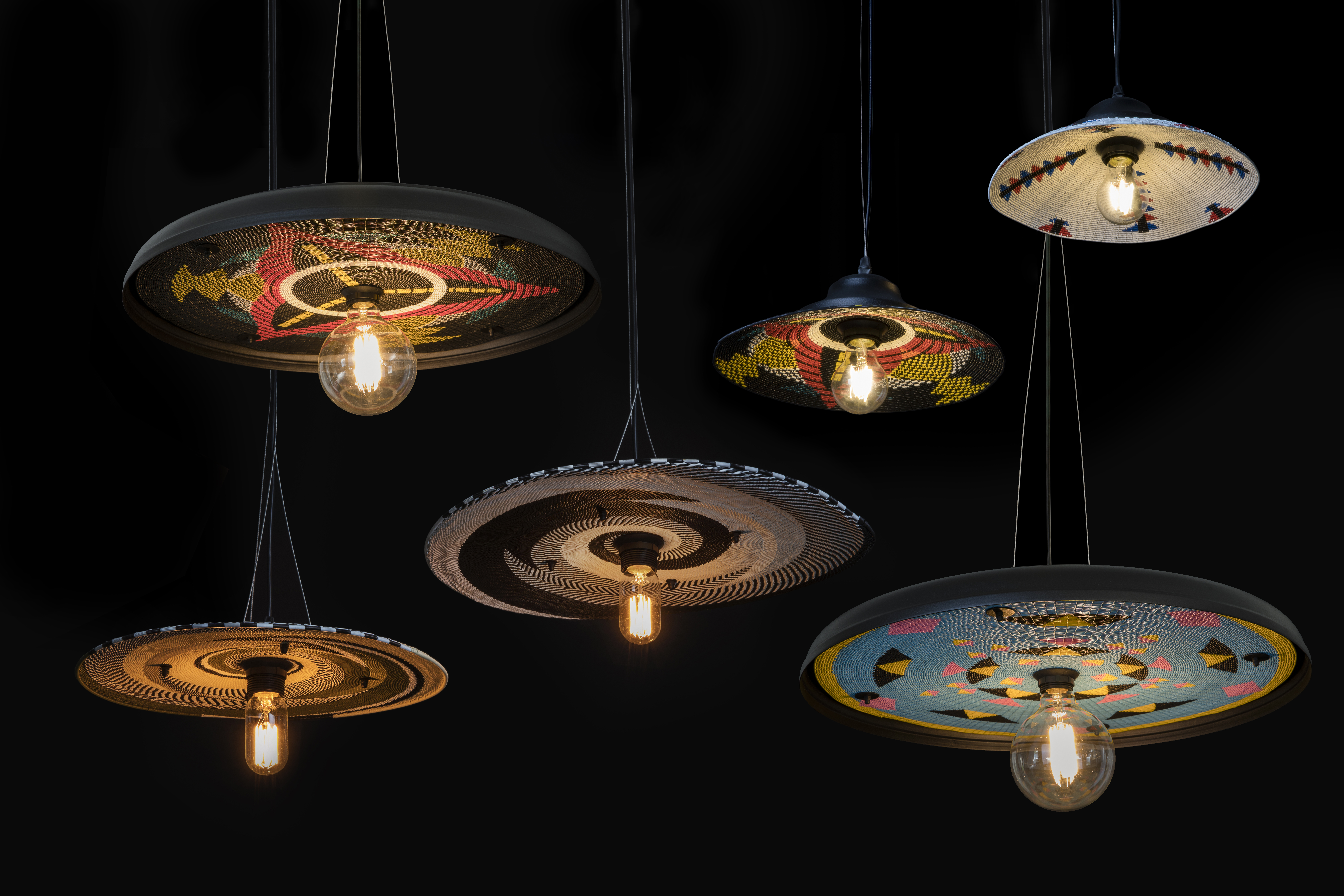
Alfred’s Lights. A collection of pendants by Mash.T in collaboration with telewire weaver, Alfred Ntuli. Image: Mash.T
That dedication to storytelling and craft, rather than following trend guides has served Mjo well. As of October 2021, both Mjo and his friend, occasional collaborator, fellow designer, and founder of TheUrbanative, Mpho Vackier were listed in the Dwell24, US magazine Dwell’s annual global roundup of 24 of “the most exciting designers making furniture, lighting, and other objects for your home”.
Storytelling in furniture design
Like Mjo’s Mash.T, Vackier’s contemporary furniture and product design company, TheUrbanative, keeps heritage and storytelling at the centre of their practice, balanced with a commitment to technique and function.
“As a brand, we believe in telling African stories through design and with that belief this collection’s forms, textures, lines and colour palette are all inspired by vernacular African architecture from Nigeria and Cameroon to Niger and Mali,” explains Vackier, referring to the brand’s 24-piece 2021 collection, Homecoming, which comprises sculptural lights, ceramics and candles, and seating.
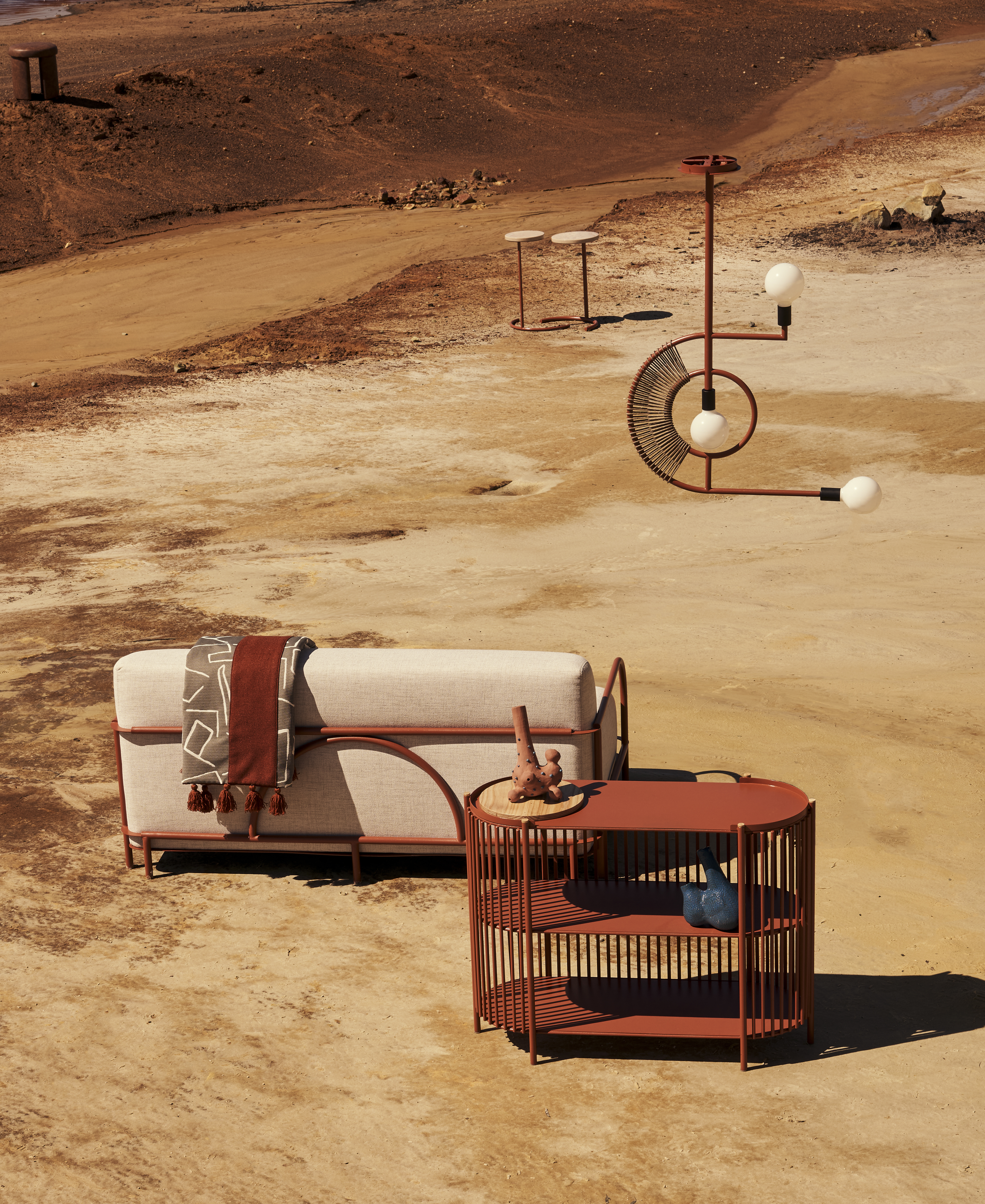
TheUrbanative’s 2021 Homecoming collection. Image: Aart Verrips
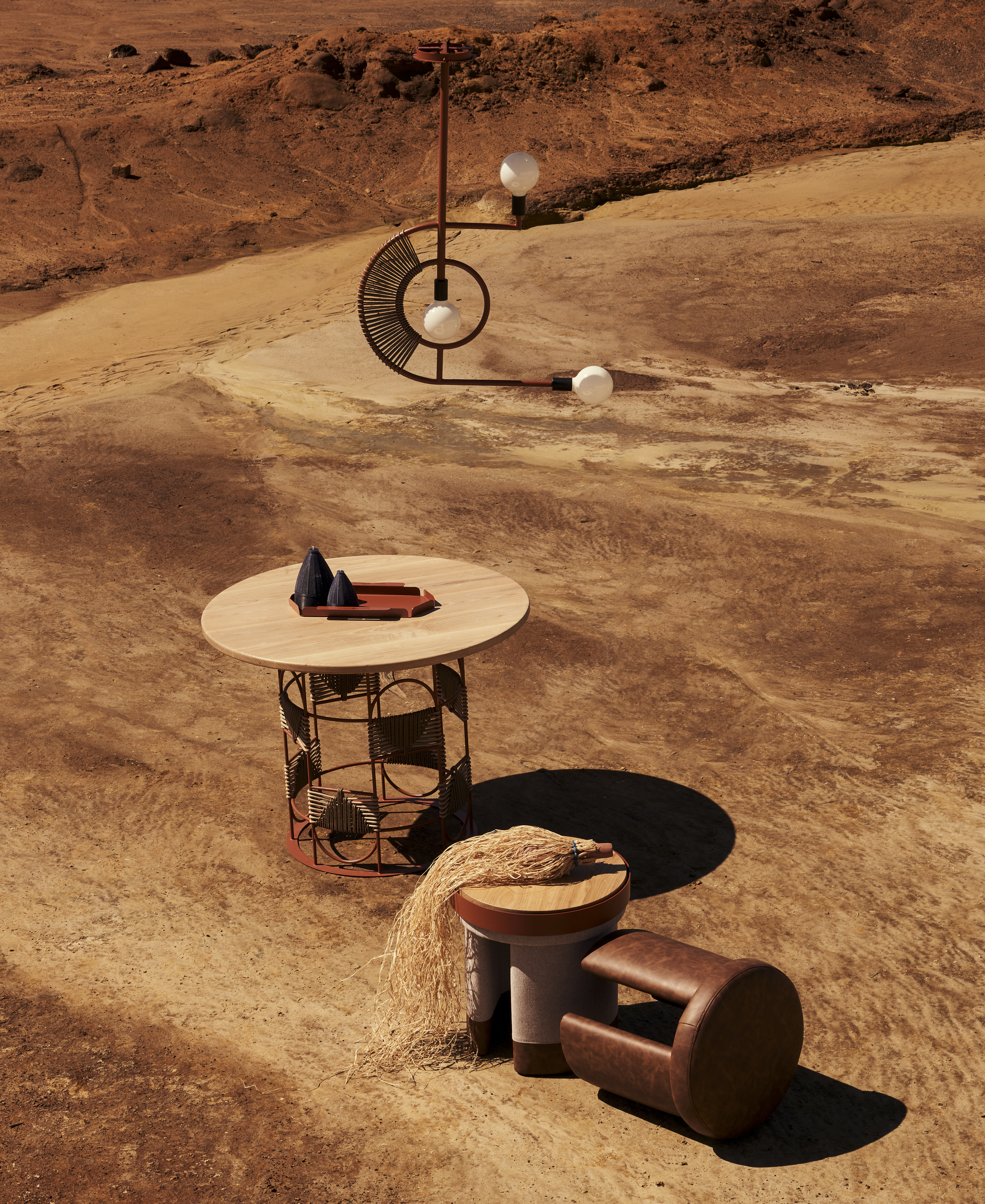
TheUrbanative’s 2021 Homecoming collection. Image: Aart Verrips
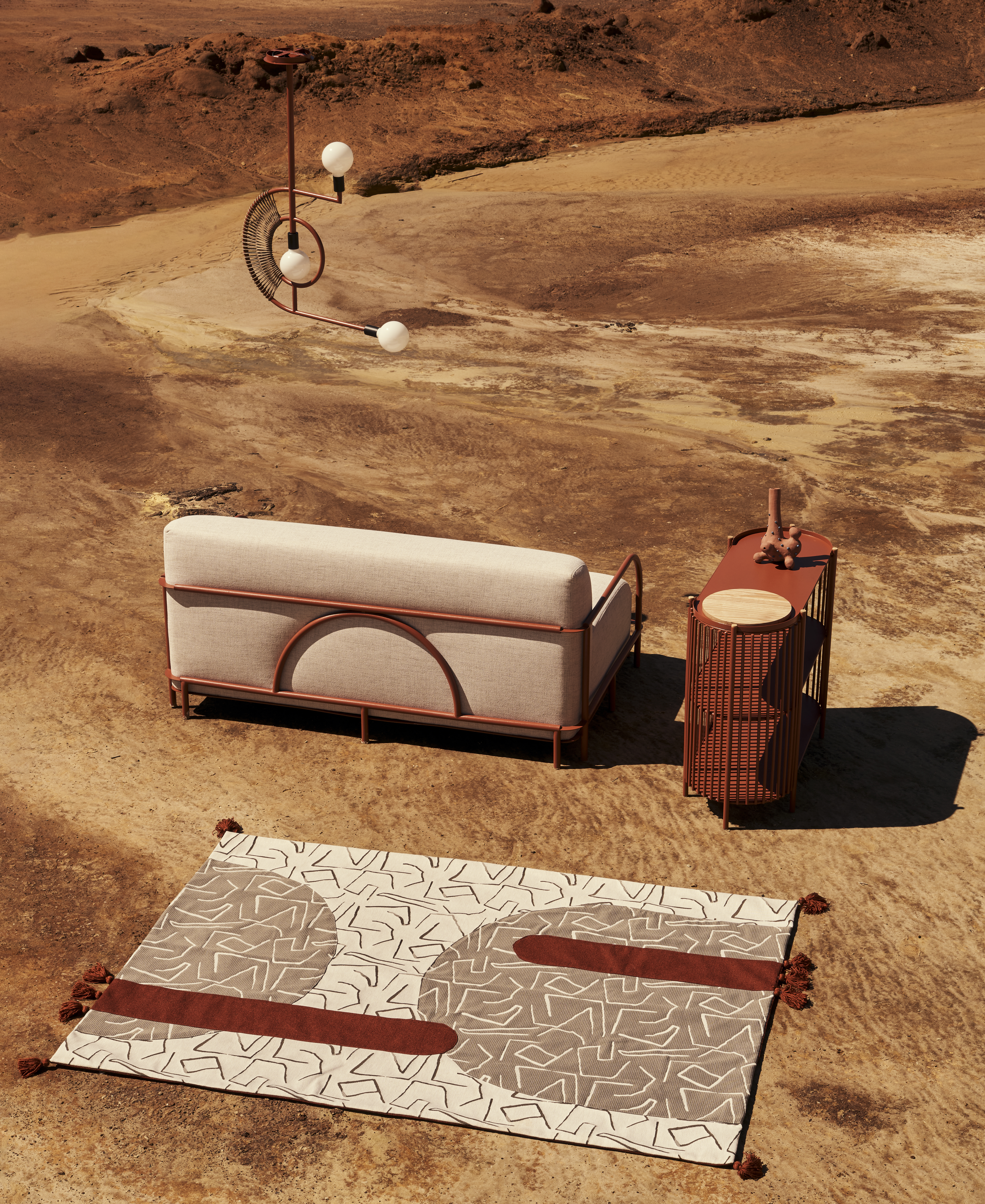
TheUrbanative’s 2021 Homecoming collection. Image: Aart Verrips
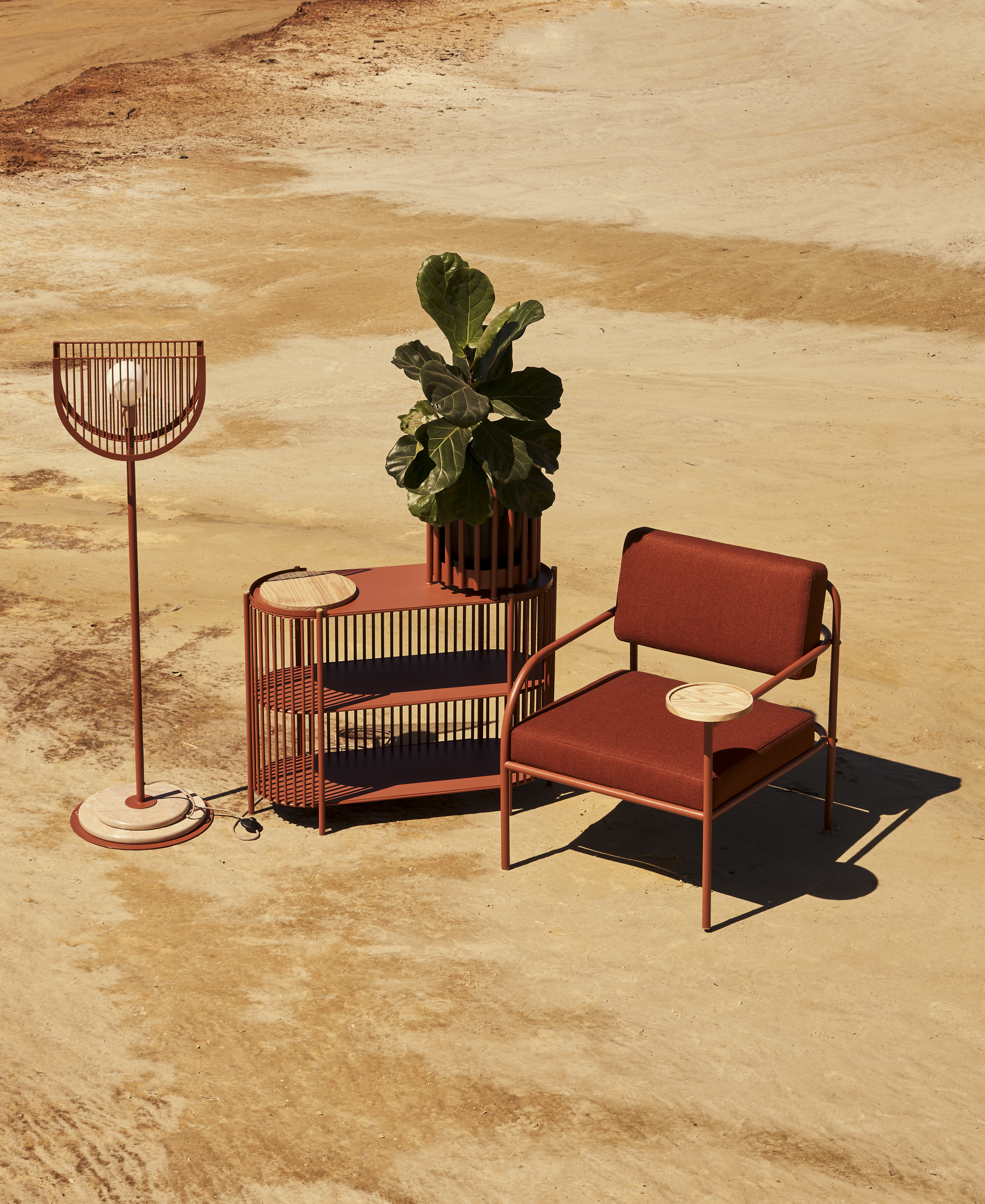
TheUrbanative’s 2021 Homecoming collection. Image: Aart Verrips
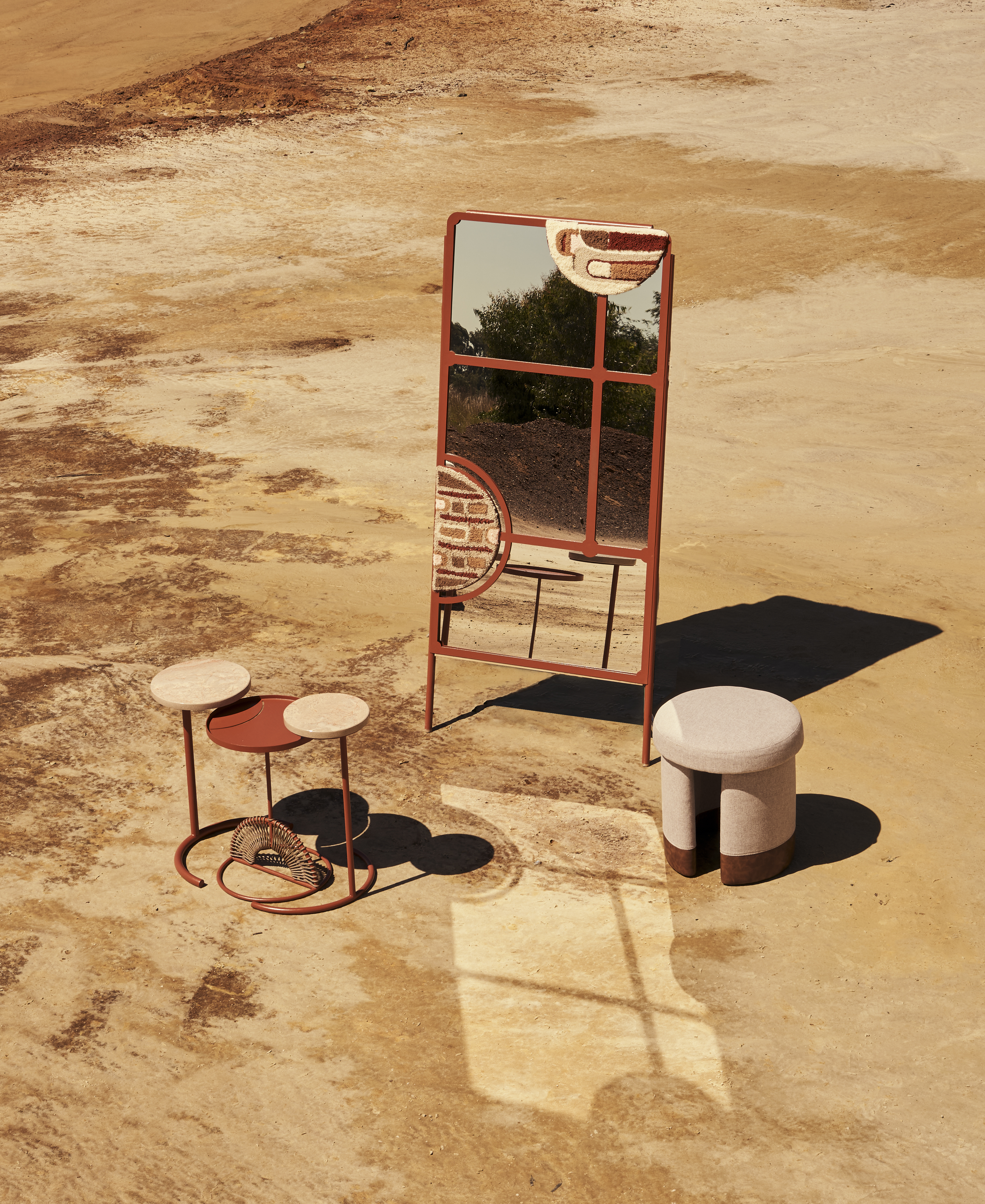
TheUrbanative’s 2021 Homecoming collection. Image: Aart Verrips
She firmly believes that if there are any trends that designers should respond to, they would have to be dictated by the end-users rather than trend specialists. Says Vackier, “As I’ve evolved as a designer, I’ve come to believe that as people who use the products, we should dictate what trends are. I do think there is global feeling of really wanting to get to the core of the things that drive us; the things that are really important to us. So I don’t look at [aesthetic] trends, but rather at the motivations that drive how people live. What problems can we solve with our product offering that people are thinking about? What situations are happening in the world that we can address? What conversations are happening in the world that we can address and lend our voice to? Of course, we would still do that in very much TheUrbanative way, using our own design language.”
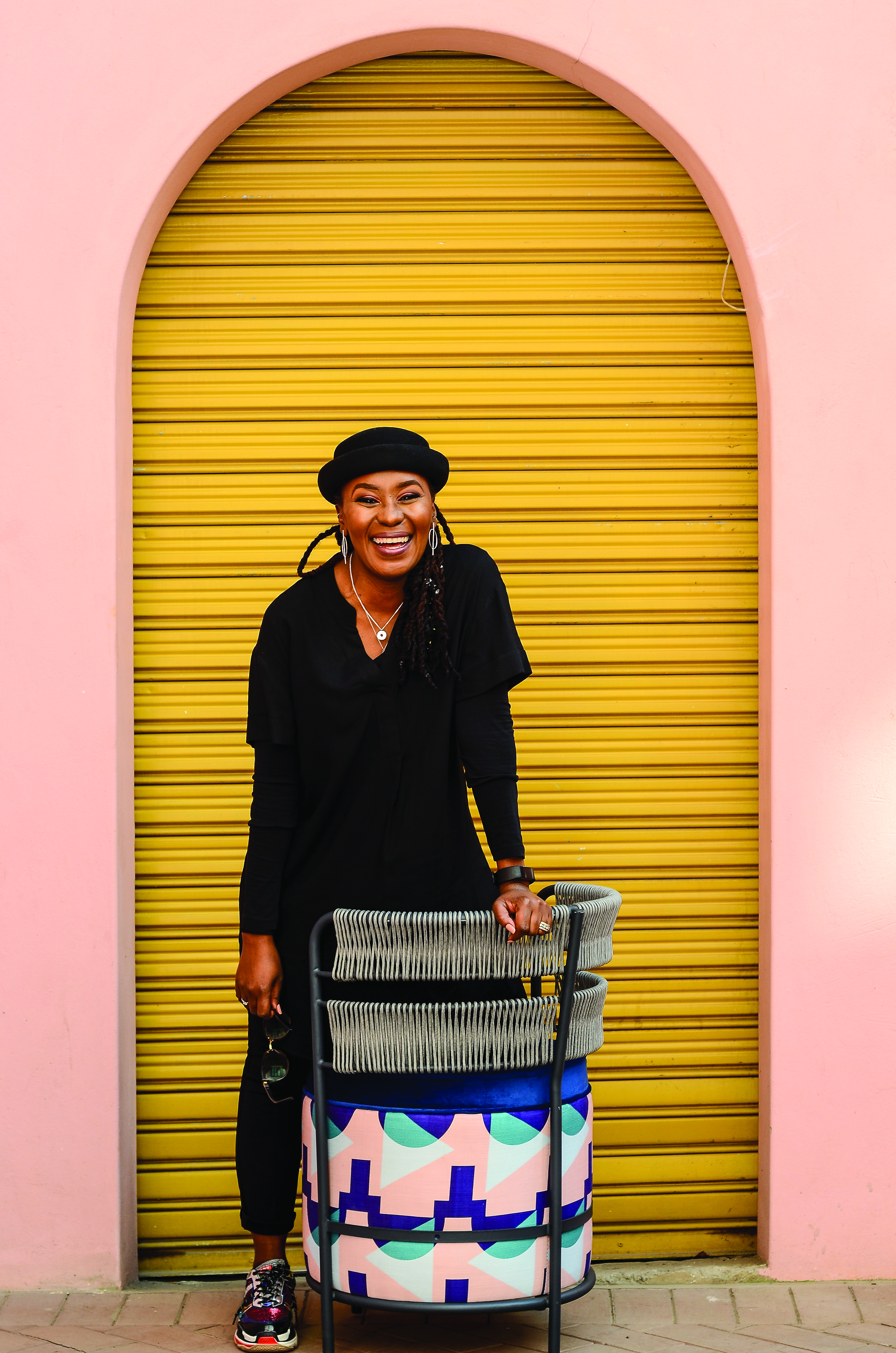
Mpho Vackier, founder of TheUrbanative. Image: Lutendo Malatji
Being the founder and designer of an established business with a signature look, and one that doesn’t prioritise trending styles, she acknowledges that there is a risk of “getting stuck in your own head; in your own idea on how to do things.” Hence, one of her main focuses in 2022 will be collaborative projects, with three already confirmed.
Although she is careful not to say what they are just yet, she tells Maverick Life that they are not necessarily with brands in the furniture design space. “I find that when you enter a space of collaboration, you really do get to look at the world differently, and ultimately, work differently.”
Lend ear and eye to the storytellers
Afri Modern: “When we work together to design a new South African aesthetic, it is the diversity of cultures rich in experiences coming together to create and build new and innovative design and art that makes it more beautiful,” says Afri Modern designer and founder, Sifiso Shange. His collection of cabinets, featuring geometric pattern design inspired by Zulu culture stay true to Afri Modern’s tagline, “storytelling through design” Instagram: @afrimodern
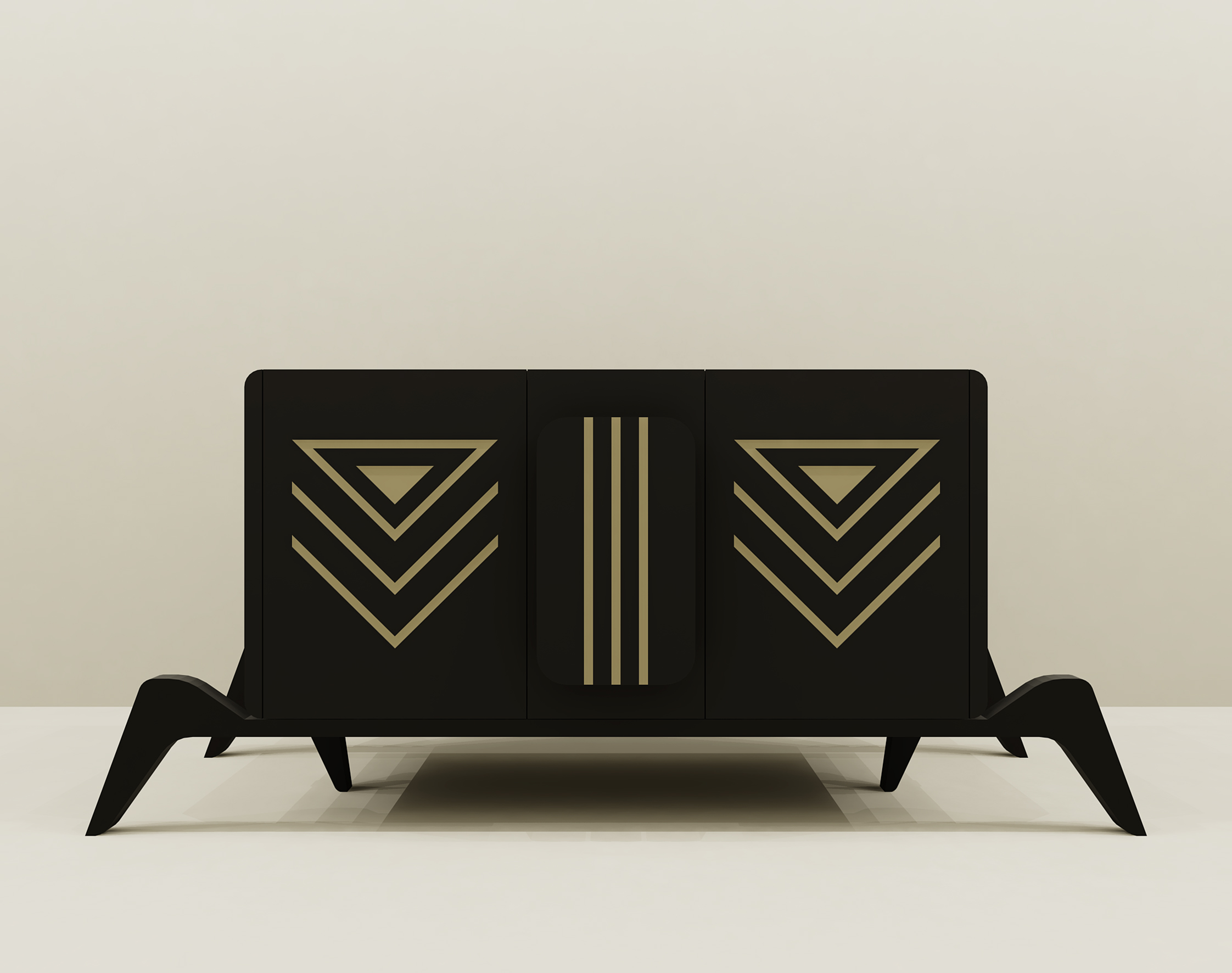
Ndlela Yami Moving Server by Afri Modern. Image: Supplied
Modern Gesture: Founded by Cape Town-based Candice Lawrence, Modern Gesture designs and manufactures handmade lampshades inspired by the colours and spiral rings often used in handcrafted Ndebele jewellery. See more of this award-winning studio’s work on Instagram: @modern_Gesture

Woven necklace lights by Candice Lawrence of Modern Gesture. Image: Justin Patrick / Supplied
Pone Creatives: Textile designer, Lesego Maloka started out in the film industry with a background in graphic design. She is the founder of Pone Creatives, which specialises in jacquard weaving textiles for home furnishings with a strong focus on heritage-inspired designs, especially drawing from her own culture and family history to create bold colourful graphic designs. Her fresh take on culturally inspired design has drawn the attention of architects and interior designers. Instagram: @pone_creative
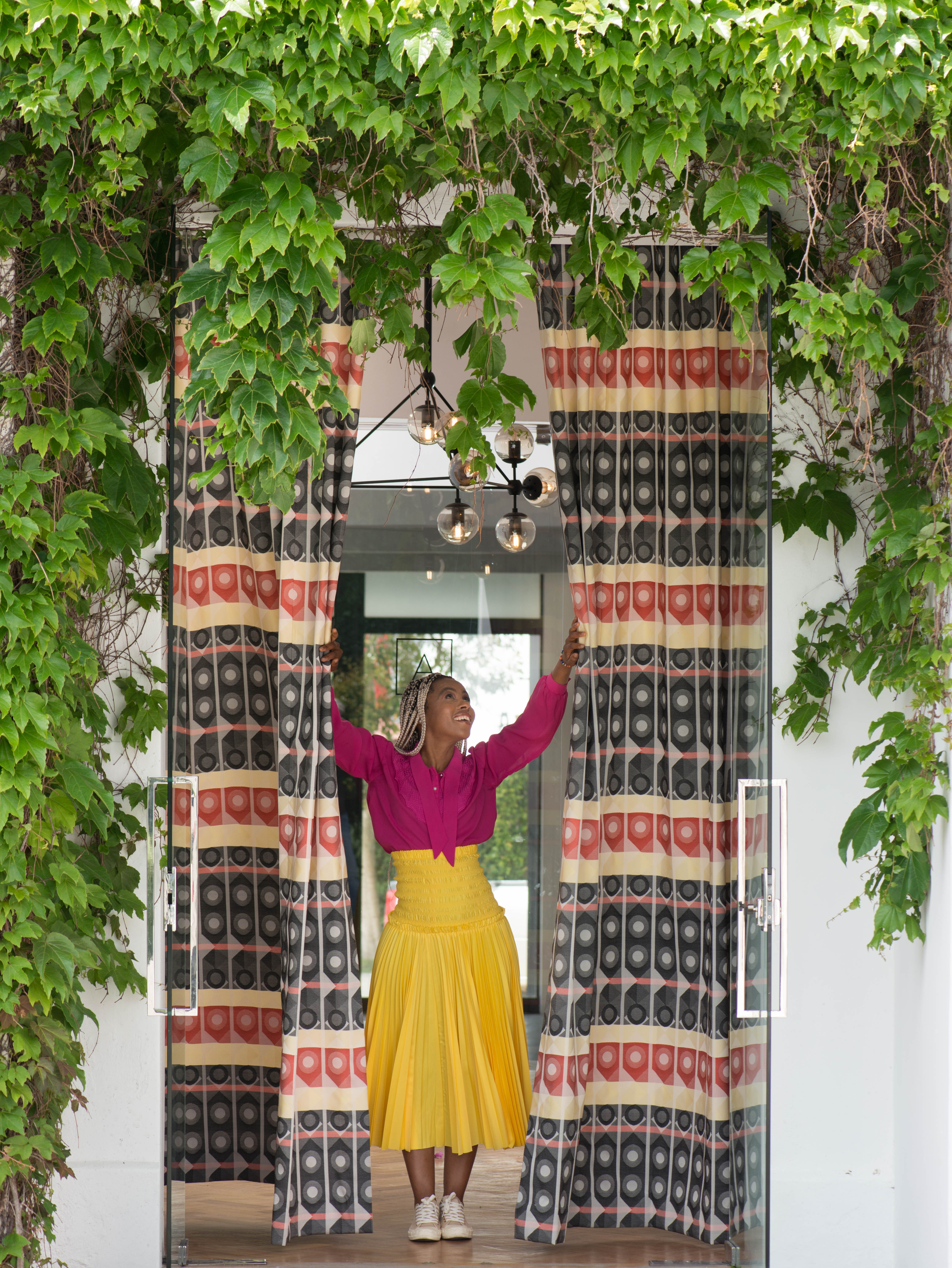
Textile designer, Lesego Maloka, founder of Pone Creatives. Image: Supplied
Renaissance Design: “My passion is to re-awaken the ancient cultural knowledge on the African continent,” says Renaissance Design founder and textile designer, Glorinah Khutso Mabaso. Her studio creates bespoke pattern designs which can be applied to wallpaper, fabric as well as a variety of surfaces. She also designs products she describes as “reflective of the African diaspora, complimenting various spaces”. Instagram: @renaissance_design01
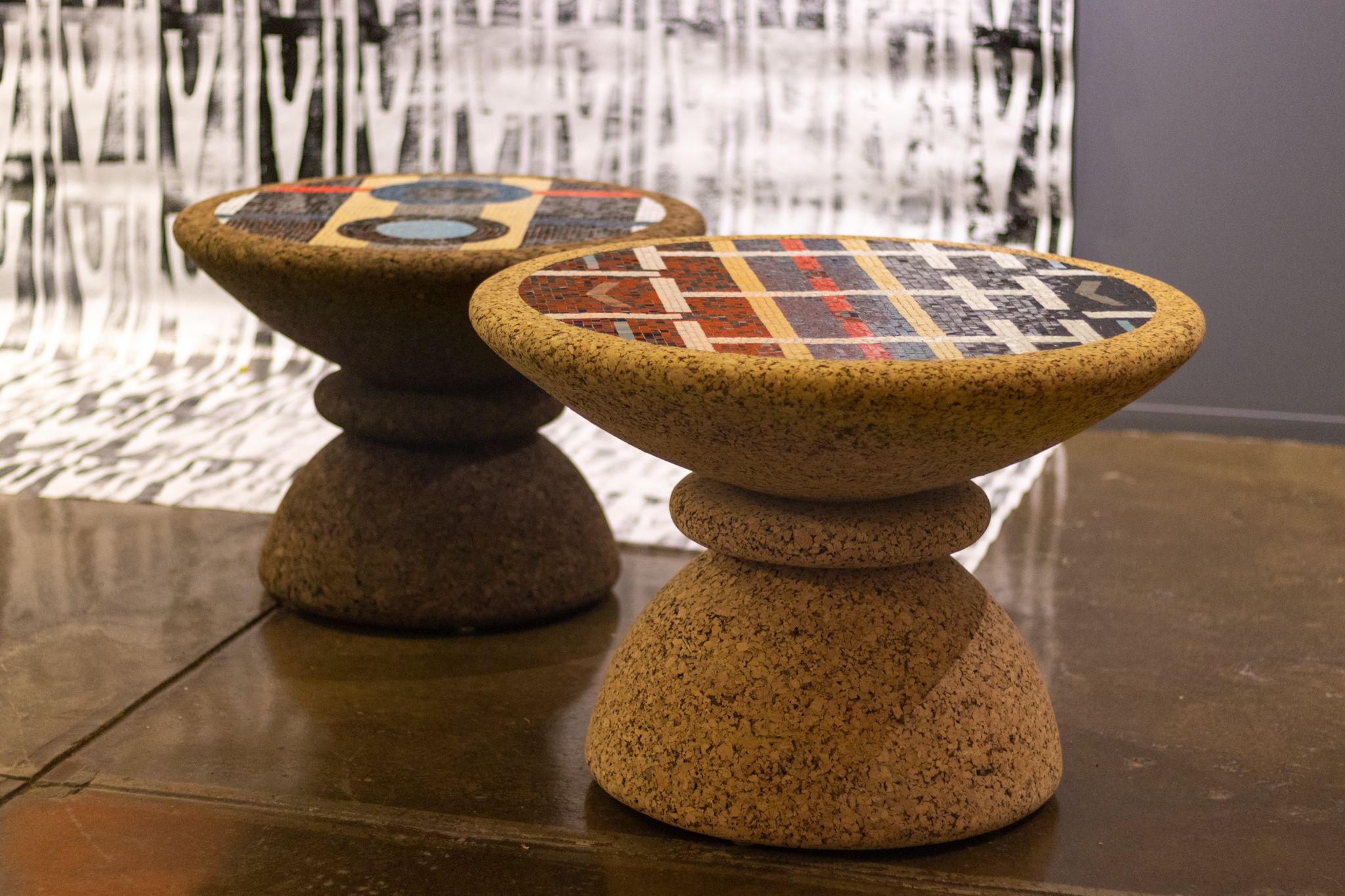
A collaboration between House Union Block (formerly known as Spier Artisan Mosaic Studios), designer Laurie Wiid van Heerden, founder of Wiid Design Studio and Glorinah Khutso Mabaso, founder of Renaissance Design, produced this collectible set of tables. Image: Malibongwe Tyilo
Jan Ernst: Architect turned ceramicist, Ernst describes himself as “a multidisciplinary creative specialising in functional art and spatial design using clay as his main medium.” Since launching his ceramic practice in 2020, he has quickly developed a following. His work is driven by his fascination with natural structures such as corals, fungi, and rock formations. Most recently, he exhibited his ceramic creations with Galerie Philia in New York and Paris. Instagram: @jan_ernst_

Ceramic by Jan Ernst. Image: Malibongwe Tyilo
DM/ ML




















Comments - Please login in order to comment.